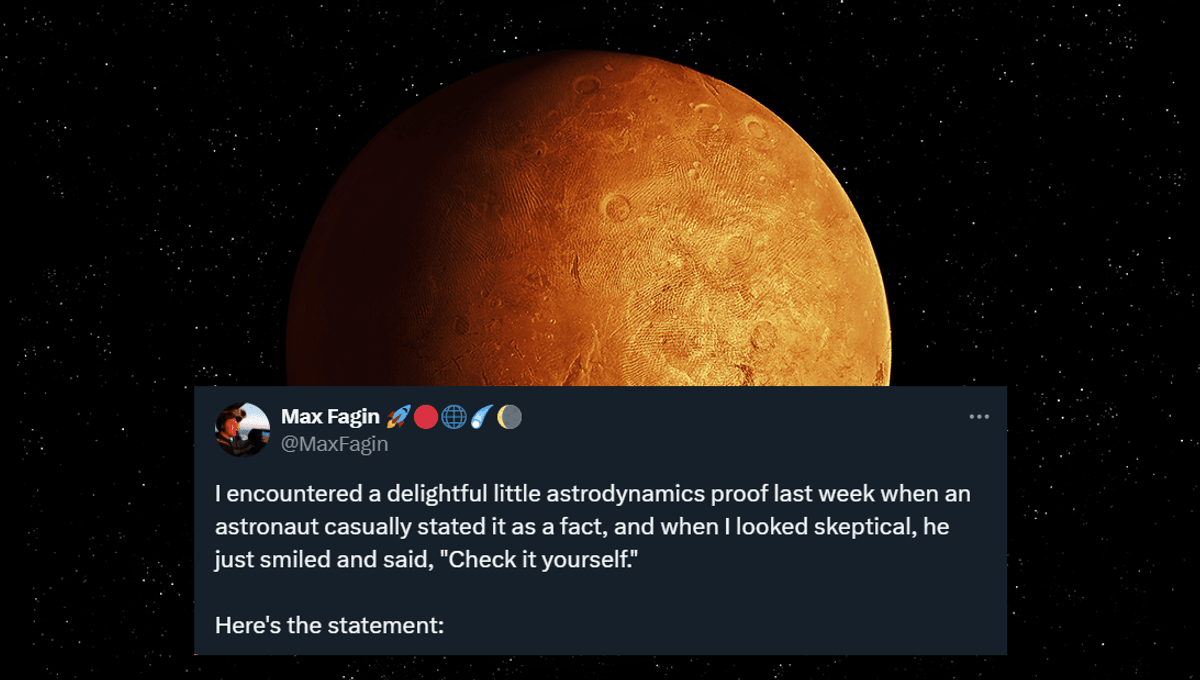
An aerospace engineer and astronomer has made waves on social media after checking the math of an astronaut that seemed too good to be true.
Max Fagin, who has worked for NASA and SpaceX, as well as working as commander at the Mars Desert Research Station, wrote on X that an astronaut casually told him a counter-intuitive statement last week. That statement was that “it takes 2 hours to orbit at the surface of any object made of rock”.
This sounded a bit odd to Fagin, but when he looked skeptical the astronaut merely smiled and told him to “check it yourself” – and so he did. First, he thought about the low orbits of (mainly) rocky objects that we know about: Earth, Mars, and the Moon.
All these orbits are around 2 hours, with the low-Earth orbit period being the quickest orbit. Fagin did the math and realized that the radius and mass of an object are unimportant when calculating low orbits. What is important is the density.
The astronaut was correct, it takes around 2 hours to orbit any object comprised of rock. Looking into it further, he realized that the same physics keeps asteroids above a certain size rotating no faster than once every two hours.
“Most asteroids larger than 200 meters [656 feet] spin at a rate below that which would cause an object on its equator to experience weightlessness,” a paper on the mechanics of moving asteroids explains. “This translates to rotation rates below 12 revolutions/day (2 hr/rev) with most having rotation periods of 4 hours or greater.”
As Fagin explains, asteroids grow through collisions of smaller rocks and are held together (often very loosely) through their own gravity. Any of these objects that spin faster than once every two hours would eject material into orbit, until it shrinks or its rotation slows to the 2-hour limit defined by its density. Which, we’re sure you’ll agree, is pretty cool to know.
Source Link: Astronomer Goes Viral After Checking Astronaut's Orbital Math That Seemed Too Weird To Be True